Diamond planes are high-performance aircraft designed for both private and commercial use. Diamond planes exhibit advanced engineering and aerodynamic efficiency. The construction involves composite materials providing durability and reduced weight. Diamond planes integrate modern avionics and propulsion systems amplifying operational safety and performance. Buy diamond planes to acquire a blend of innovation, reliability, and precision in aviation technology.
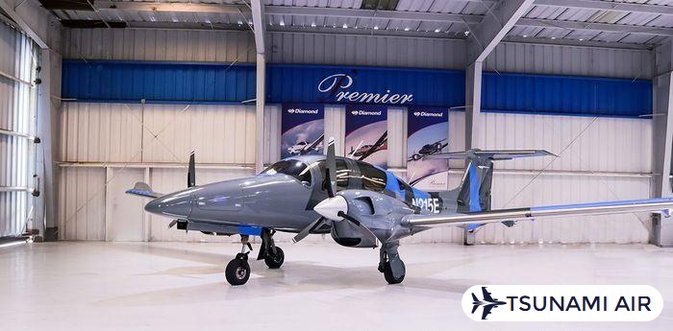
USD $1,489,000
Twin EngineReg Number
N215E
Total Time
937 hrs
Location
United States
Year
2021
Seller: N/A
Phone: (954) 771-0411
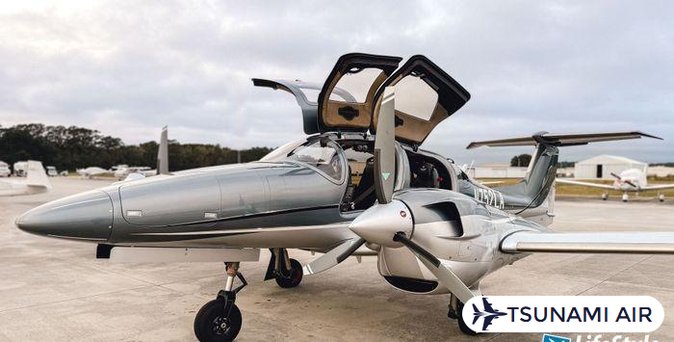
USD $1,650,000
Twin EngineReg Number
N752LA
Total Time
315 hrs
Location
United States
Year
2022
Seller: N/A
Phone: (406) 359-1669
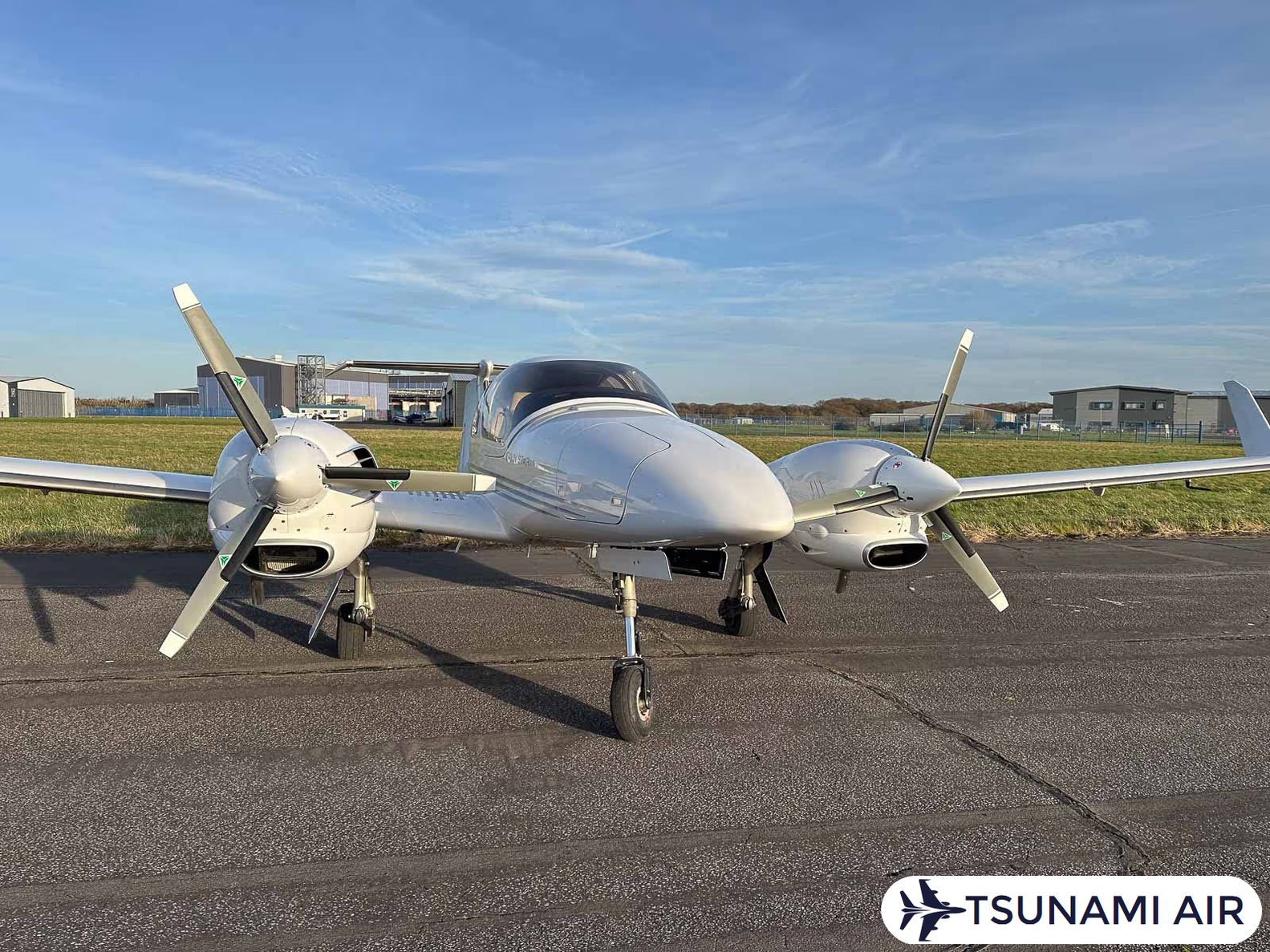
USD $595,000.00
Twin EngineReg Number
F-HNOS
Total Time
572 hrs
Location
United Kingdom
Year
2007
Seller: AT Aviation
Phone: +441404642006
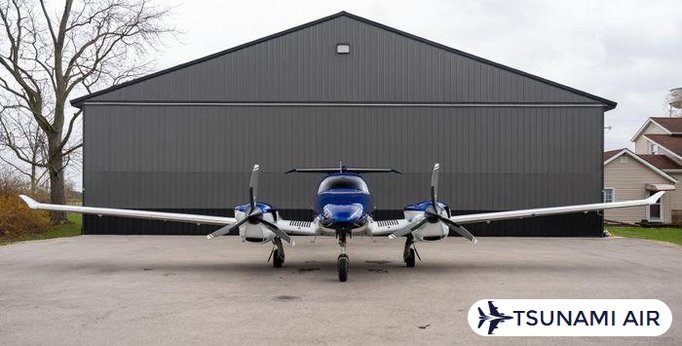
USD $1,799,000
Twin EngineReg Number
N456SA
Total Time
130 hrs
Location
USA
Year
2024
Seller: N/A
Phone: (937) 216-7586
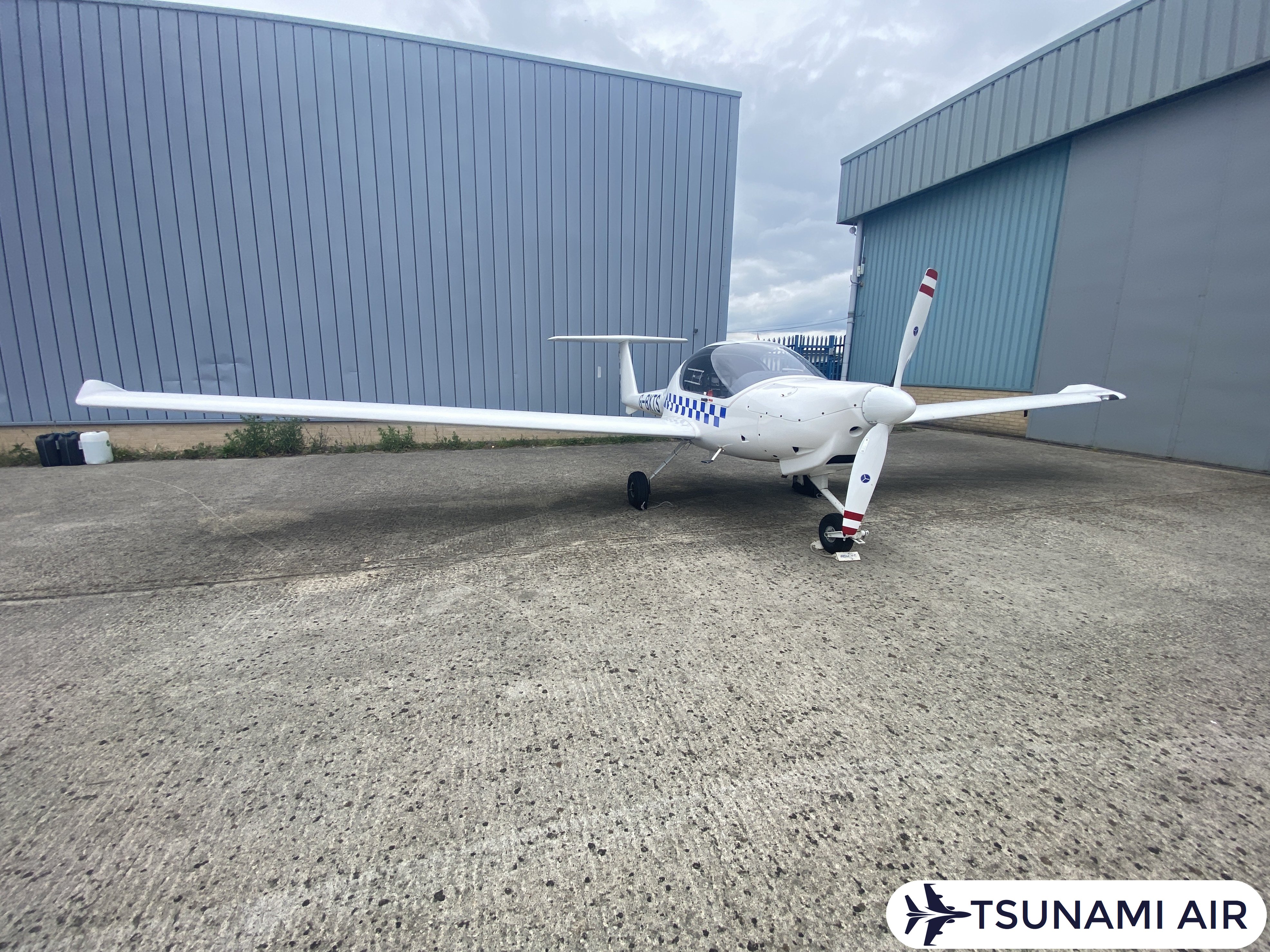
USD $95,000
Single EngineReg Number
G-BXTS
Total Time
2632 hrs
Location
United Kingdom
Year
1997
Seller: Andy Caddick
Phone: +44 (0)783 625 1391
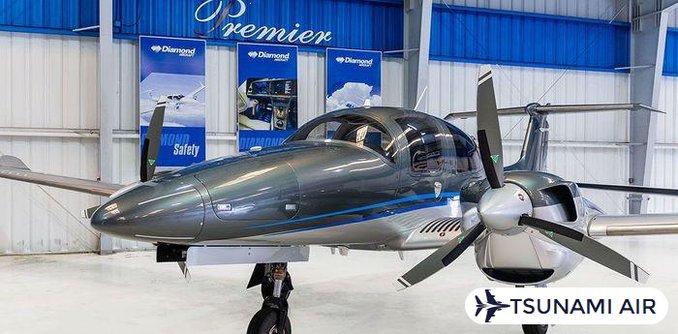
USD $1,574,000
Twin EngineReg Number
C-FBCP
Total Time
1050 hrs
Location
United States
Year
2019
Seller: N/A
Phone: (954) 771-0411
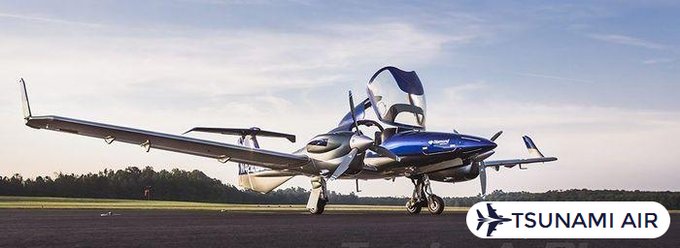
USD $825,000
Twin EngineReg Number
Not Listed
Total Time
1500 hrs
Location
United States
Year
2022
Seller: Blue Line Aviation
Phone: (919) 369-2683
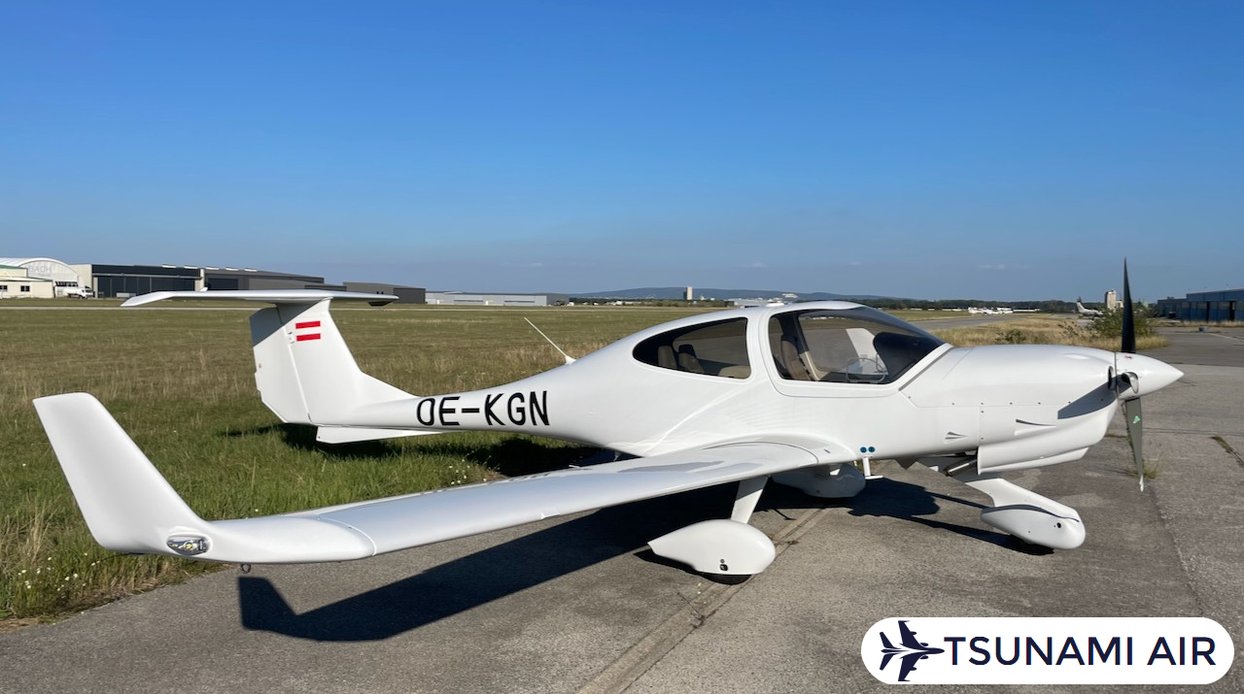
USD $N/A
Single EngineReg Number
OE-KGN
Total Time
5820 hrs
Location
Austria
Year
2007
Seller: Thomas Wieser
Phone: +43 (0) 676 721 7335
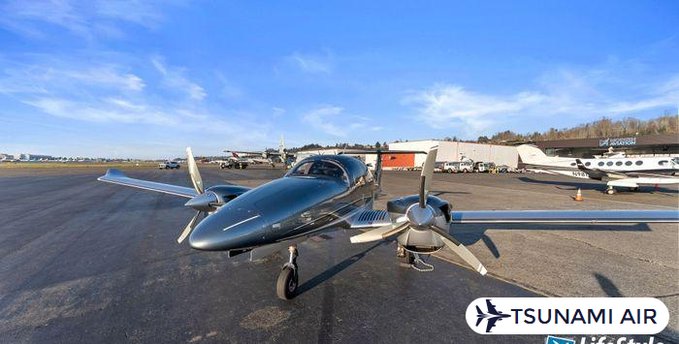
USD $1,400,000
Twin EngineReg Number
N149DA
Total Time
1200 hrs
Location
United States
Year
2018
Seller: N/A
Phone: (406) 359-1669
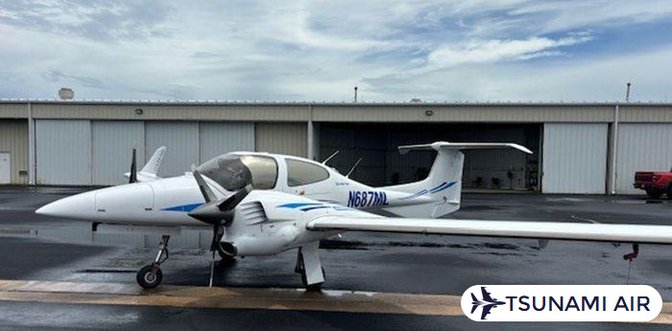
USD $725,000
Twin EngineReg Number
N687ML
Total Time
6443 hrs
Location
United States
Year
2007
Seller: N/A
Phone: (954) 771-0411
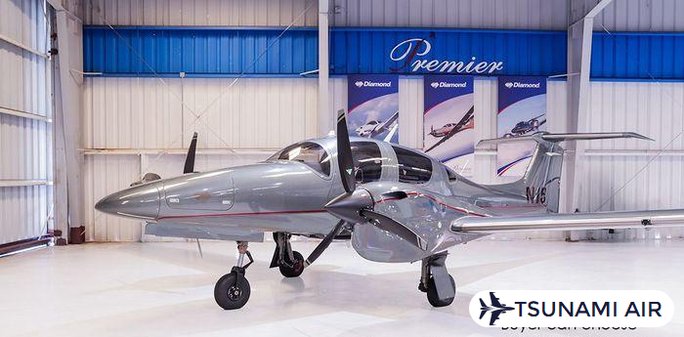
USD $1,820,740
Twin EngineReg Number
N167PS
Total Time
N/A hrs
Location
United States
Year
2025
Seller: N/A
Phone: (954) 771-0411
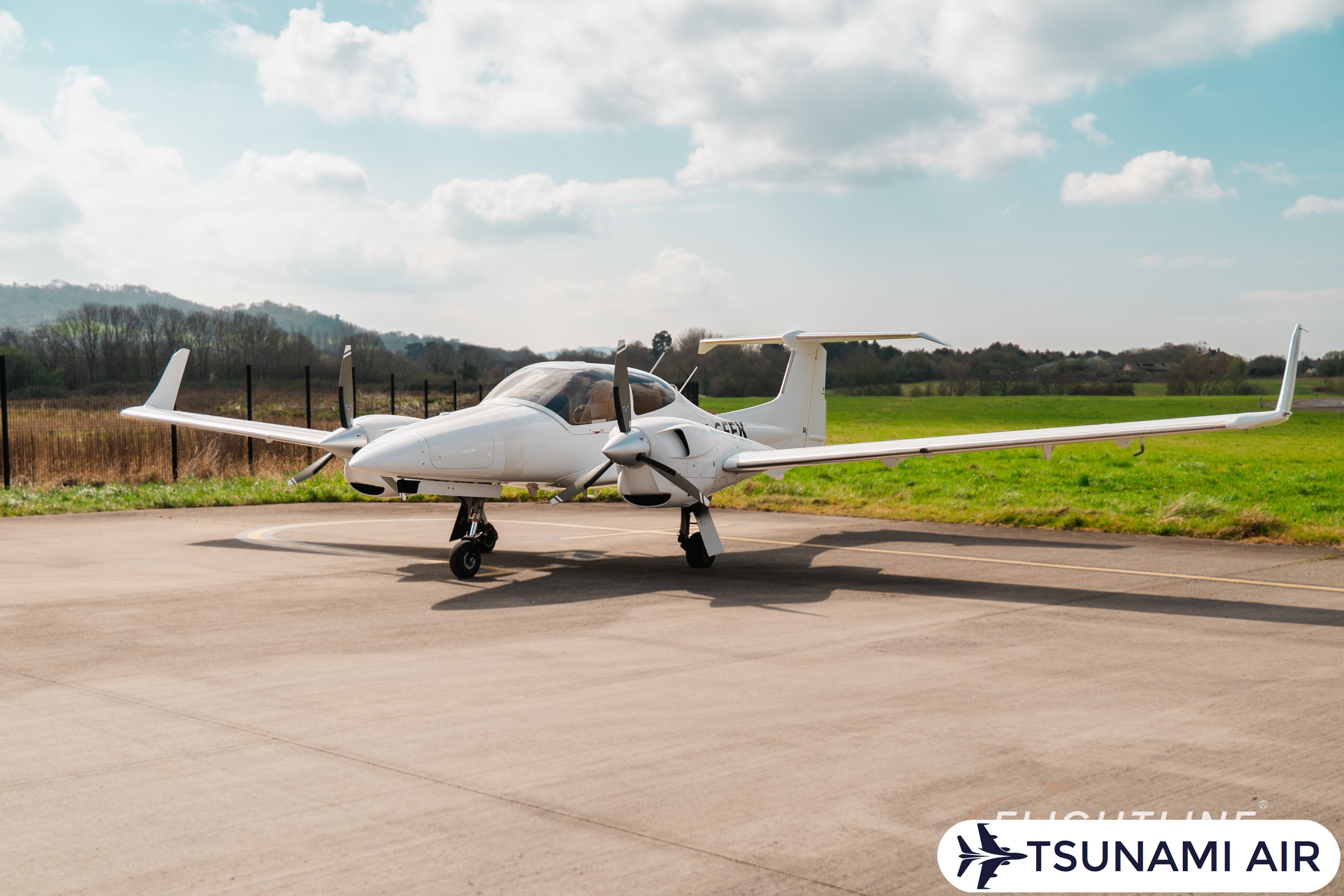
USD $599,995
Twin EngineReg Number
G-GEEK
Total Time
1150 hrs
Location
United Kingdom
Year
2015
Seller: Aircraft Sales
Phone: +44 (0)20 3797 1238
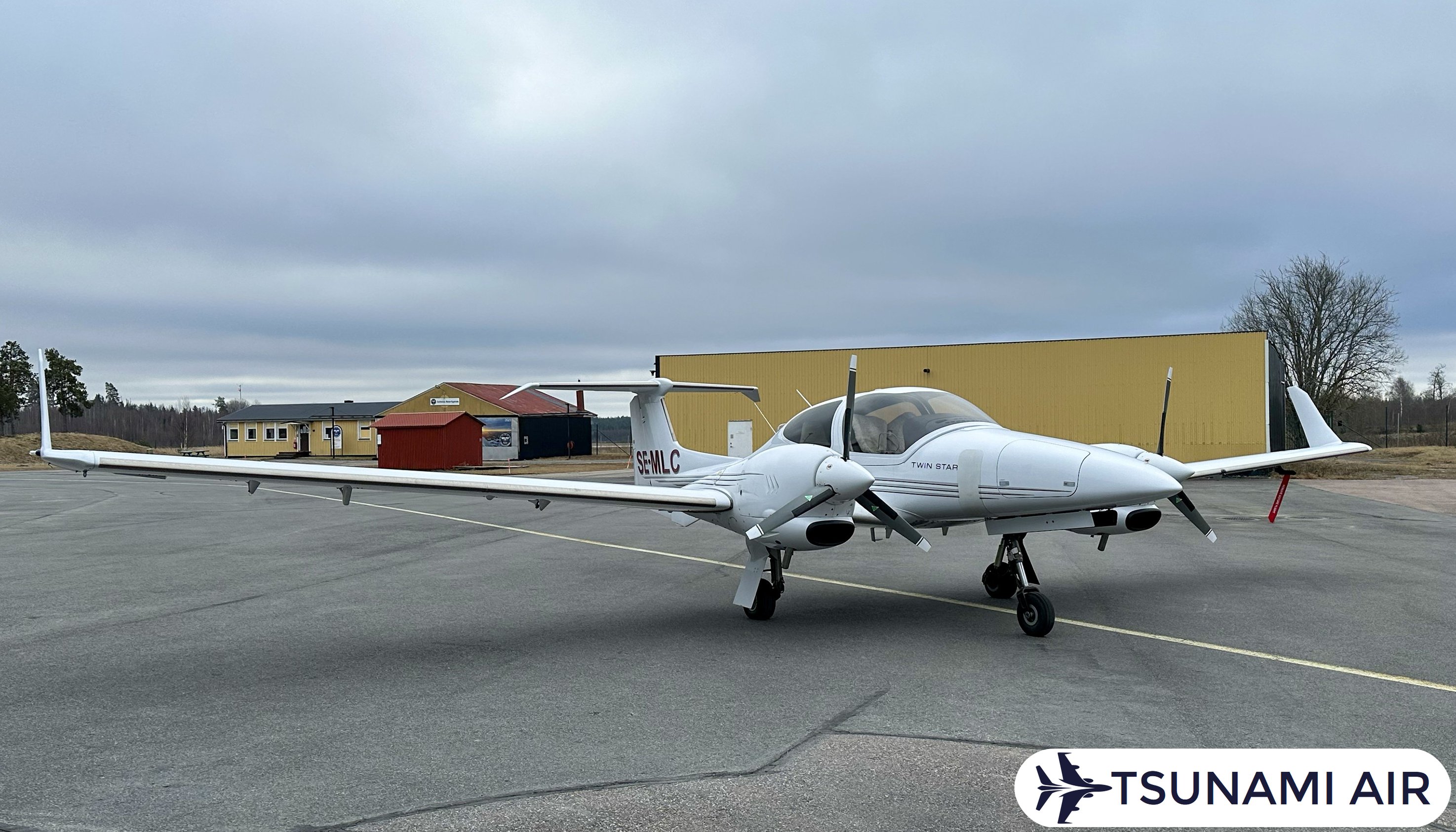
USD $475,000
Twin EngineReg Number
SE-MLC
Total Time
4228 hrs
Location
Sweden
Year
2008
Seller: Bjarne Jorsal
Phone: +45 4016 5401
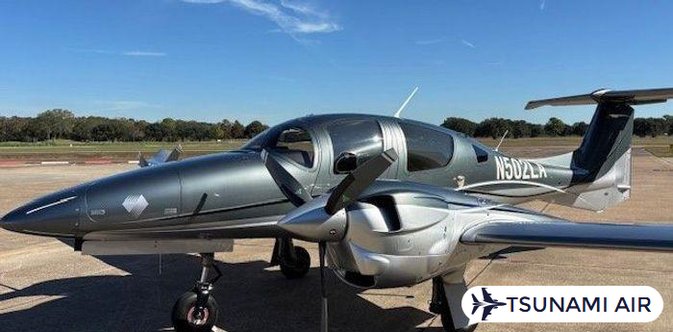
USD $1,499,500
Twin EngineReg Number
N502LA
Total Time
590 hrs
Location
United States
Year
2020
Seller: N/A
Phone: (954) 771-0411
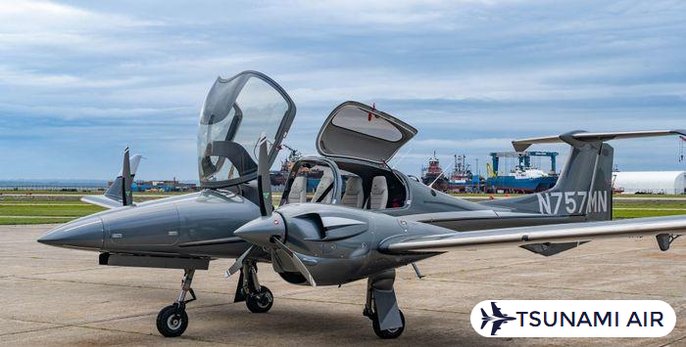
USD $Call for Price
Twin EngineReg Number
N757MN
Total Time
100 hrs
Location
United States
Year
2023
Seller: N/A
Phone: (406) 359-1669
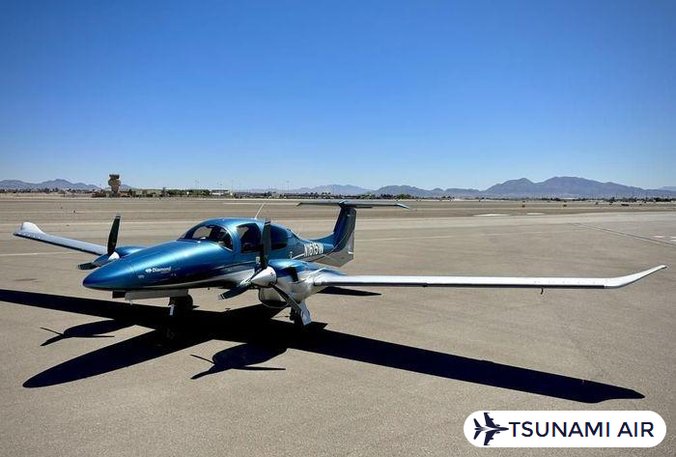
USD $1,350,000
Twin EngineReg Number
N1615W
Total Time
714 hrs
Location
United States
Year
2018
Seller: N/A
Phone: (702) 540-5478
The Diamond plane brand is Diamond Aircraft Industries, a leading manufacturer in the general aviation sector known for producing modern designs of gliders and light aircraft like the DA20, DA40, DA42, and DA62. Diamond Aircraft, headquartered in Wiener Neustadt, Austria, has pioneered many aviation firsts since 1981.
Diamond Aircraft Industries expands its product line with models like the DA40, DA42 Twin Star, and DA50. The Diamond DA40 single-engine aircraft serves as a reliable trainer and private flying option with nearly 2,500 units produced since its introduction in 1997. The Diamond DA42 Twin Star is a twin-engine aircraft launched in 2004, featuring advanced avionics systems and versatility for multi-role applications. The Diamond DA50 showcases innovative design and high-performance capabilities, appealing to pilots seeking power and efficiency in light aircraft.
Diamond Aircraft Industries earns recognition as a reputable manufacturer in the aviation industry. The company focuses on producing high-performance light aircraft suited for flight training, personal use, and special missions. Models like the Diamond DA40 trainer and DA42 Twin Star incorporate Garmin G1000 avionics systems, boosting safety and reducing pilot workload. Diamond Aircraft Industries aerospace contributions include remote sensing solutions with aircraft like the DA42 MPP and DA62 MPP, solidifying its position as an innovative leader.
Commitment to innovation drives Diamond Aircraft Industries' production of modern technology and safety features. Proprietary lead-free jet fuel piston engines from Austro Engine GmbH, a subsidiary of Diamond Aircraft Austria, refine efficiency and environmental sustainability. Composite construction and aerodynamic designs enhance performance across the product line. Diamond Aircraft Industries integrates advanced airframe technology with cutting-edge engineering, maintaining a reputation for excellence in safety and performance. The accident rate of Diamond aircraft remains lower than the general aviation average, making them a preferred choice for pilots worldwide.
The types of planes Diamond manufactures include the DA62 and DA62 MPP models. The DA62 is a luxury, spacious, and quiet twin-engine aircraft with retractable gear, advanced tech, and lightweight carbon composite construction. The DA62 MPP serves multi-purpose use while sharing the same efficient power plant as the standard DA62.
The types of planes that Diamond manufactures are listed below.
Diamond Aircraft manufactures single-engine aircraft like the DA20 Katana, a two-seat light aircraft designed for efficiency and maneuverability. The DA20 Katana serves as an ideal choice for flight training and personal flying. The DA40 Diamond Star, part of the diamond single family, is a four-seat aircraft offering robust performance and ease of operation. Advanced avionics and stability make the DA40 Diamond Star popular among private owners and flight schools. Both models highlight Diamond Aircraft Industries' focus on lightweight composite materials and fuel-efficient designs.
The DA42 Twin Star features a twin-engine design with four seats, combining safety and advanced avionics. Known for efficient fuel consumption, the DA42 Twin Star appeals to private operators and flight schools seeking multi-engine experience. The aircraft integrates modern technology, boosting situational awareness and reliability. Its lightweight composite construction contributes to its high-performance capabilities, making it versatile for both personal and expert aviation needs.
The DA62 family includes the DA62 and the DA62 MPP variant, both featuring high-performance capabilities and composite construction. The DA62 offers luxury and efficiency with seating for four to five occupants. Advanced avionics and strong composite materials define its design, making it suitable for family travel and business flying. The DA62 MPP variant serves specialized missions, leveraging the same efficient power plant as the standard DA62. Both models showcase Diamond Aircraft's commitment to innovation in the general aviation sector.
Shared characteristics across Diamond Aircraft models include lightweight composite materials, fuel efficiency, and advanced technology integration. Composite construction enhances strength-to-weight ratios, contributing to reduced environmental impact. Advanced avionics provide pilots with boosted control and safety. Diamond Aircraft Industries continues to innovate, producing aircraft that meet diverse aviation needs while maintaining high standards of quality and efficiency.
The features of Diamond aircraft include advanced composite materials, aerodynamic efficiency, spacious luxury cabin, twin efficient engines, state-of-the-art avionics, strong safety certifications, and flexibility in customization. Diamond aircraft's cabin provides comfortable seating, easy access, and generous payload capacity. Rear compartments offer additional storage, boosting mission flexibility.
The features of Diamond aircraft are outlined below.
Diamond has pioneered many aviation innovations in composite airframe technology. The DA40 model demonstrates exceptional fuel efficiency, achieving up to 12.5 gallons (47.3 liters) per hour at cruise speeds. Diamond DA40 aerodynamics reduce drag through sleek designs, while its maneuverability ensures smooth and responsive handling, making it ideal for training and recreational flying. The DA42 Twin Star offers a climb rate of up to 1040 (317) feet per minute and a range of 1210 (2241) nautical miles, powered by twin Austro Engine AE 300 turbocharged diesel engines producing 168 (125) horsepower each. Diamond DA42 performance benefits from the twin-engine design, providing redundancy and amplified safety.
Rotax engines power output balances efficiency and reliability across Diamond aircraft models. These engines minimize maintenance needs and reduce fuel consumption, contributing to operational cost savings. Glass cockpit avionics enhance navigation and display technology, allowing precise flight control. Modern glass cockpit avionics feature advanced tools that refine situational awareness, aiding safe and efficient flight operations. Diamond aircraft have earned a strong reputation due to their commitment to innovation, safety, and environmental responsibility.
The specifications of Diamond aircraft include the DA62 with two Austro Engine AE330 turbocharged engines producing 180 HP (134.2 kW) each, reaching a maximum speed of 192 kts (220.9 mph) TAS at 14,000 ft (4,267.2 m), and a climb rate of 1,029 ft/min (5.23 m/s). Diamond aircraft are known for speed, climb rates, and operational ranges.
The specifications of Diamond aircraft are given in the table below.
Aircraft Model | Engine Type | Maximum Speed (kts TAS) | Cruise Speed (kts TAS) | Stall Speed (kts CAS) | Rate of Climb (ft/min) | Maximum Range (nm) | Take-off Ground Roll (m) | Landing Ground Roll (m) | Fuel Capacity (US gal) | Max Operating Altitude |
DA40 NG/XLT | Austro AE 300 (168 hp) | 192 | 180 | 68 | 1,028 | 1,288 | 397 | 305 | ~50 | Unspecified |
DA42 Twin Star | Austro AE 300 x2 (168 hp each) | 197 | 190 | 62 | 1,114 | 1,225 | 375 | 340 | ~29.5 per tank | 18,000 ft |
DA20 Katana | Rotax 912 iSc3 (100hp) or Continental IO-240 (125 hp) | 122-130 | Not specified | ~46 | Not specified | Not specified | Not specified | Not specified | Not specified | Unspecified |
DA50 RG | Continental CD-300 (300 hp) | 181 | 172 | 58 | 780 | 820 | Not specified | Not specified | ~40-50 | Unspecified |
DA62 | Austro AE330 x2 (180 hp each) | 192 | 185 | 60-70 | 1,029 | 1,283 | ~480 | ~883 | ~60-70 | 20,000 ft |
D-Jet | Williams FJ334-4A (1,900 lbf thrust) | 315 | 240 | Not specified | Not specified | 1,320 | 2,372 | Not specified | Not specified | 25,000 ft |
The DA40 NG/DA40 XLT utilizes an Austro Engine AE 300 turbocharged 2.0L (122 cubic inches) diesel engine producing 168 hp (125 kW), achieving a maximum speed of 192 kts (220 mph) at 14,000 ft (4,267 m) and cruising at 180 kts (207 mph) at 85% power and 12,000 ft (3,658 m). The stall speed in landing configuration is 68 kts (34.7 m/s), with a maximum rate of climb of 1,028 ft/min (5.22 m/s). Fuel capacity (combining main tank and auxiliary tank) extends the operational range to 1,288 nm with the auxiliary tank at FL160 and 50% power.
The DA42 Twin Star employs two Austro Engine AE 300 turbocharged 2.0L (122 cubic inches) diesel engines, each producing 168 hp (125 kW), reaching a maximum speed of 181 kts (335 km/h) at 16,000 ft (4877 m) and cruising at 172 kts (318 km/h) at 82% power and 14,000 ft (4267 m). Stall speed landing configuration is 115 km/h (71.5 mi/h) CAS, with a rate of climb of 5.7 m/s (18.7 ft/s).
The DA50 RG integrates a Continental CD-300 turbocharged engine producing 300 hp, achieving a maximum cruise speed of 173 kts. Fuel consumption is 34.1 liters/hour (9.01 gallons/hour) at maximum range, with a useful load of 559 kg (1232.38 lbs). Equipped aircraft if not otherwise stated include advanced avionics systems boosting pilot experience.
The DA40 series aircraft accommodates four seats, with a useful load of 550-600 lbs (250-272 kg). Empty weight and fuel capacity ( main tank and auxiliary tank) are optimized for efficient missions. The DA42 aircraft achieves a useful load of 600-700 kg (1322.77-1543.24 lbs), with twin Austro Engine AE300 engines guaranteeing reliability. The DA62 aircraft, equipped with twin Austro Engine AE330 engines producing 180 hp (134.2 kW) each, supports a useful load of 800-900 kg (1763.7-2094.4 lbs). Standard equipped aircraft integrate modern Garmin G1000 NXi avionics, contributing to safety features unique to each model. Diamond aircraft certification adheres to rigorous standards, emphasizing crashworthiness and operational efficiency. Advanced avionics and safety features maintain innovation within the Diamond aircraft model lineup, addressing practical needs for pilots and operators.
Engines that power Diamond aircraft include Austro Engine AE300 turbocharged diesel engines in the DA42, each producing 168 HP. Diamond aircraft models like the DA62 use Austro Engine AE330 engines, while other models utilize Lycoming or Rotax engines. The Austro Engine E4 is another option in Diamond's lineup.
Rotax 912 series engines power lighter Diamond aircraft models. The Rotax 912 series delivers fuel efficiency and reliability in specific airframes. These engines are well-suited for entry-level and recreational aircraft due to their compact design and compatibility with AvGas or gasoline. Lycoming O-360 engines provide robust performance characteristics in certain Diamond aircraft. The Lycoming O-360 model ensures suitability for flight missions requiring higher power output and durability. This engine type is favored for its proven track record in demanding operational environments.
Austro Engine innovations enhance Diamond aircraft capabilities through advanced diesel and turbocharged engines. The Austro Engine AE300 model, a 2.0-liter turbocharged common rail injected diesel engine, produces 168 hp and features an EECU single lever control system. Twin-engine configurations like the DA42 utilize two AE300 engines, each producing 168 hp, paired with MT Propeller MTV-6-R 3-blade constant speed propellers. The Austro Engine AE330, generating 180 horsepower, powers the DA62 while maintaining jet fuel compatibility and efficiency. Both engines optimize fuel economy and reduce emissions across Diamond’s lineup.
Rotax piston engines, including the Rotax 912 series, serve lighter aircraft with cost-effective and efficient solutions. Lycoming piston engines, like the Lycoming O-360 model, deliver reliable performance for heavier airframes. Austro Engine diesel engines, like the AE300 and AE330, excel in twin-engine configurations and larger aircraft, offering 168 hp and EECU single lever control systems. Each engine type balances performance, maintenance requirements, and operational costs to meet specific aviation needs.
Diamond planes are fuel-efficient due to their composite airframes and efficient engines. Models like DA40 and DA62 demonstrate economical fuel consumption rates, with DA40 burning 19.3 liters (5.09 gallons) per hour at 60% power and DA62 using about 44.7 liters (11.81 gallons) per hour under similar conditions. Sleeker airframes allow Diamond planes to fly faster while maintaining efficiency.
Diamond aircraft achieve fuel efficiency through innovative design and advanced technology. The DA40 and DA62 models exemplify this with their lightweight construction and aerodynamic features. Diamond DA40 lightweight design reduces drag and enhances fuel efficiency economy, achieving a fuel consumption rate of 5.1 US gallons per hour at 60% power. Diamond DA42 twin-engine configuration balances performance and fuel efficiency, consuming less fuel compared to other twin-engine aircraft in its class. Diamond DA62 composite construction further optimizes fuel burn, using about 12 gallons (45.4 liters) per hour during economy cruise at 60% power. Diamond aircraft innovation integrates efficient engine performance, with the DA40 powered by the Austro Engine AE 300 delivering 168 horsepower and the DA62 featuring twin Austro Engine AE 330s producing 360 horsepower.
Fuel efficiency in aviation evaluates metrics like fuel burn per hour, per distance, or per passenger. Operators, pilots, and private users assess Diamond aircraft fuel efficiency based on operational context. Diamond DA40 fuel consumption rates make it a cost-effective option for personal transportation and pilot training. Diamond DA62 engine performance supports extended missions requiring greater range, offering over 1,300 miles (2,092 kilometers) during economy cruise. Diamond DA42 engine efficiency ensures competitive fuel use despite its twin-engine setup, appealing to users prioritizing redundancy and safety. Diamond aircraft aerodynamics focus on sleek shapes to minimize drag, contributing to reduced fuel consumption during flight.
Diamond planes lead in fuel efficiency when compared to industry benchmarks like Cessna and Mooney. Diamond aircraft lightweight construction and advanced materials enhance their competitive edge in fuel efficiency consumption. The DA40 achieves better fuel economy than many single-engine competitors, while the DA62 demonstrates superior performance against other twin-engine aircraft. Diamond aircraft innovation emphasizes fuel efficiency optimization, enabling operation on Jet-A fuel, which is globally available and cost-effective. Reduced cruise speeds further maximize fuel efficiency, making Diamond planes an economical choice for various aviation needs.
Safety features of Diamond planes include a composite safety cell design, structural redundancy, and agile handling characteristics. These features enhance controllability and stability, reducing the risk of accidents. Diamond aircraft maintain superb performance through active measures like aerodynamic stability and spin-rated capabilities, assuring occupant protection and minimizing pilot workload.
The safety features of Diamond planes are outlined below.
Certification and design standards guarantee compliance with aviation safety regulations, featuring a composite safety cell and structural redundancy to enhance occupant protection. Diamond aircraft incorporate crashworthy seats impact protection and energy absorption systems, which reduce injury risks during impacts. Fuel systems in Diamond aircraft integrate crashworthy fuel system leak prevention and fire resistance measures, minimizing post-crash hazards. The DA40 and DA62 models exemplify adherence to diamond aircraft safety certification processes, validated by both EASA and FAA certifications.
Advanced avionics and glass cockpit technology refine situational awareness through advanced avionics flight monitoring capabilities. Glass cockpit instrumentation provides comprehensive data for pilots, providing superior visibility and reducing workload. Terrain awareness and warning systems detect terrain hazards, delivering proximity alerts to prevent controlled flight into terrain. Traffic collision avoidance systems offer collision detection and avoidance alerts, boosting multi-layered safety measures across the fleet.
Emergency locator transmitters support emergency signaling and location tracking during rescue operations. Composite fuselage structures guarantee structural integrity and impact resistance, contributing to diamond aircraft safety design. Rigorous testing, including full-scale dynamic crash tests, validates passive safety features like crashworthy seats and fuel systems. Diamond aircraft maintain a best safety record in the aviation industry, backed by real-world operational data from single and multi-engine planes.
The models of Diamond Aircraft include the DA20, DA40 Series, DA42, DA50, DA62, and D-Jet. Twin-engine models like the DA42 and DA62 offer boosted safety and capabilities. The DA62 features Austro Engine AE 330 turbocharged engines with 180 HP (134.2 kW) each and max takeoff weights of 2,300 kg (5,070.6 lbs).
The models of Diamond Aircraft are given in the table below.
Model | Engine Type | Total Horsepower | Maximum Speed (knots) | Range (nautical miles) | Price (USD) |
Diamond DA20 | Rotax 912 iSc3/Continental IO-240 | 100 HP/125 HP | 149 mph (approx. 129 kts) | 604 miles (approx. 525 nm) | Not specified |
Diamond DA40 | Austro Engine AE300 | 168 HP | 154 | 940 | Not specified |
Diamond DA42 | Austro Engine AE300 | 336 HP (total) | 197 | 1,215 | $840,000 |
Diamond DA50 | Continental CD-300 | 270 HP | 181 | 750 | $1,150,000 |
Diamond DA62 | Austro Engine AE330 | 360 HP (total) | 192 | 1,283 | $1,250,400 |
Diamond D-Jet | Williams FJ334-4A turbofan | Not specified | 315 | 1,320 | Not specified |
The Diamond DA20 serves as a two-seat trainer and light-sport aircraft, widely adopted for initial flight training. Flight schools favor the Diamond DA20 Katana due to its ease of handling and low operating costs. The aircraft employs a composite airframe made of glass- and carbon-fiber reinforced plastic, guaranteeing corrosion resistance and low maintenance. Two engine configurations are available: the Rotax 912 iSc3 Sport producing 100 horsepower and the Continental IO-240-B32B generating 125 horsepower. The Diamond DA20-C1 achieves a cruise speed of 240 km/h (149 miles/h) and offers a range of 973 km (604 miles) at 55% power. A T-tail arrangement enhances stability and handling, making the Diamond DA20 an ideal choice for entry-level pilots.
The Diamond DA40 series stands as a four-seat aircraft with composite construction, reducing weight while boosting durability. Composite materials in the Diamond DA40 refine structural integrity and lower fuel consumption. The DA40 NG integrates modern avionics and a fuel-efficient Austro Engine AE 300 rated at 168 horsepower. This model reaches a maximum speed of 154 knots and provides a range of up to 940 nautical miles. Excellent visibility and ergonomic cockpit design distinguish the Diamond DA40, making it suitable for training, touring, and private use. The DA40 balances comfort, efficiency, and performance, appealing to a wide range of aviation enthusiasts.
The Diamond DA42 features a twin-engine configuration with advanced avionics, providing safety and versatility. Each Austro Engine AE 300 in the DA42 produces 168 horsepower, totaling 336 horsepower. Advanced avionics, including the Garmin G1000 NXi suite, equip the Diamond DA42 for reliability. The aircraft achieves a maximum speed of 197 knots and offers a range of up to 1,215 nautical miles. Twin-engine models like the DA42 emphasize redundancy and safety, making them ideal for expert training and demanding missions. The DA42 starts at a price point of $840,000, reflecting its value in the market.
The Diamond DA62 excels as a twin-engine aircraft with long-range capability and luxury features. Two Austro Engine AE 330 turbocharged engines produce 180 horsepower each, totaling 360 horsepower. The DA62 achieves a maximum speed of 192 knots and offers a range of up to 1,283 nautical miles. Spacious, pressurized cabins accommodate up to seven occupants, catering to utility, business, or family travel. Modern diesel propulsion and advanced avionics enhance the DA62’s efficiency and appeal. The Diamond DA62 starts at a price point of $1,250,400, positioning it as a premium option in the twin-engine category.
The Diamond DA50 delivers high-performance capabilities in a single-engine variant designed for efficiency and speed. The DA50 RG model utilizes a Continental CD-300 turbocharged engine producing 270 horsepower. This model achieves a maximum speed of 181 knots and offers a range of up to 750 nautical miles. A spacious cabin enhances comfort, appealing to pilots seeking a balance of power and agility. The Diamond DA50 starts at a price point of about $1,150,000, targeting customers who prioritize performance and luxury in a compact package. Diamond aircraft models cater to diverse aviation needs, from personal flying to expert training and long-distance travel.
The differences between the Diamond DA-40 plane and DA-42 are that the DA40 has a single engine, lower maintenance costs, and is more economical to operate. The DA42 features twin engines, higher payload capacity, and greater safety redundancy but comes with more expensive maintenance and operating expenses.
The differences between the Diamond DA-40 plane and DA-42 are explained in the table below.
Feature | Diamond DA-40 | Diamond DA-42 |
Engine Configuration | Single-engine | Twin-engine |
Engine Type | Lycoming IO-360-M1A (Piston) | Austro Engine AE 300 (Turbo-Diesel) x 2 |
Engine Power | 180 HP | 168 HP per engine (336 HP total) |
Maximum Speed | 154 knots | 197 knots |
Range | 940 nautical miles | 1,215 nautical miles |
Fuel Capacity | 39 US gallons | 76.4 US gallons |
Useful Load | Lower | 700 lbs (317.5 kg) with 50 gal (189.27 L) fuel |
Maintenance Costs | Lower | Higher |
Operational Costs | Economical | Expensive |
Safety Redundancy | Limited | High (due to twin-engine design) |
Primary Use Cases | Training, private flying | Versatility, higher payload missions |
Construction Material | Composite materials | Composite materials |
The Diamond DA-40 employs a Diamond DA-40 single-engine configuration equipped with the Lycoming IO-360-M1A piston engine, which emphasizes reliability and simplicity. The single-engine configuration simplifies operation, making the DA-40 suitable for training environments and cost-effective flying. The DA-40 achieves a maximum speed of 154 knots and offers a range of up to 940 nautical miles with a fuel capacity of 39 US gallons. The piston engine traditional design reduces maintenance complexity and operating costs, appealing to private owners and flight schools. The Diamond DA-42 utilizes a diamond DA-42 twin-engine configuration powered by two Austro Engine AE 300 turbo-diesel engines, each producing 168 HP. The DA-42's diesel engine fuel efficiency allows it to achieve a maximum speed of 197 knots and a range of 1,215 nautical miles with a fuel capacity of 76.4 US gallons. The twin-engine configuration redundant safety provides added security, though it increases operational complexity and costs.
The payload capacity of the Diamond DA-42 exceeds that of the DA-40 due to its twin-engine design. The DA-42 achieves a useful load of 700 lbs (317.5 kg) even with 50 gallons (189.25 liters) of fuel onboard, making it ideal for missions requiring higher payload flexibility. The DA-40’s lower payload capacity limits its suitability for tasks demanding extended range or additional cargo. Diamond aircraft manufacturer designs both models to cater to distinct market demands, with the DA-40 targeting simplicity and economy while the DA-42 focuses on versatility and performance. The DA-42 incurs higher maintenance costs compared to the DA-40, due to its twin-engine configuration and advanced diesel technology. Both aircraft utilize composite materials in their construction, reducing maintenance needs compared to aluminum airframes.
The history of the Diamond aircraft is marked by innovation and milestones, starting with its founding in 1981 by Austrian designer Wolf Hoffmann. Initially known as Hoffmann Flugzeugbau, the company pioneered advanced composite materials and produced the HK36 Dimona, a motor glider that achieved commercial success. Diamond Aircraft officially became the company's name in 1996 and expanded globally with facilities in Austria, Canada, and China.
The progression of Diamond Aircraft from the HK36 Dimona to advanced models like the DA20, DA40, and DA62 demonstrates a commitment to innovation. The DA20 Katana, introduced in the early 1990s, became a cornerstone for flight training due to its lightweight composite structure. The DA40, certified in 2000, incorporated advanced avionics and composite materials, setting new standards in general aviation. The DA42 Twin Star, launched in 2004, marked a leap with its twin-engine design customized for both training and surveillance missions. The DA62, introduced in the late 2010s, expanded Diamond's offerings with a larger airframe and boosted performance capabilities.
Diamond Aircraft Industries achieved global prominence by establishing facilities in Austria, Canada, and China after 1996. The company’s production milestones include the DA40 receiving certification in 2000 and the DA42 gaining widespread adoption in the multi-engine market. International expansion strengthened Diamond’s manufacturing capacity and market reach. The acquisition by Wanfeng Aviation in 2017 further solidified Diamond Aircraft Group as a major player in the aviation sector. This global presence enabled the company to meet increasing demand while maintaining high production standards.
Diamond Aircraft played a pivotal part in defining light aircraft markets through innovations in composite materials and diesel piston engines. The company became the third largest manufacturer of general aviation planes, competing effectively against established brands. The DA40 and DA42 models gained recognition for their efficiency and safety features. Composite material usage reduced weight and refined fuel economy, addressing industry demands for cost-effective solutions. Diamond Aircraft positioned itself as a leader during shifts toward sustainable and advanced aviation technologies.
External factors like regulatory changes and economic conditions influenced Diamond Aircraft's trajectory. The discontinuation of the D-Jet project in 2013 resulted from financial issues during the Great Recession. Despite this setback, Diamond Aircraft maintained its focus on technological advancements. The company aligned with broader aviation trends by incorporating advanced materials and propulsion systems into its designs. Contributions to the industry include pioneering jet technology in the D-Jet and promoting efficient composite construction methods across its aircraft models.
Diamond Aircraft stands out in its use of diesel engines in piston aircraft. Diamond Aircraft has reformed the general aviation market by developing robust, efficient engines. Diamond Aircraft produces aircraft that combine performance, efficiency, and safety, setting it apart from competitors relying on conventional avgas engines.
Diamond Aircraft appeals to a wide range of audiences by addressing the needs of potential buyers, industry experts, and investors. The balance between performance, efficiency, and safety resonates strongly across these groups. Diamond Aircraft models incorporate advanced technology and engineering excellence, providing low operating costs and reliable performance. The DA40 model achieves excellent efficiency with over 2,500 units sold worldwide. The DA62 model offers long-range capability and luxury features, making it ideal for high-end personal and expert use. Diamond Aircraft stands out through its ability to combine cutting-edge innovations with practical solutions that meet diverse aviation requirements.
Key factors defining Diamond Aircraft's distinction include design and technical innovations like diesel engines and composite materials. Diamond Aircraft introduced the first monocoque safety cell made from glass and carbon fiber composites, which withstands 26 G (91.44 meters per second squared) in crash tests. The proprietary lead-free jet fuel piston engines developed by Austro Engine GmbH reduce environmental impact and operating costs. Compared to competitors using conventional avgas engines, Diamond Aircraft achieves superior fuel efficiency and reliability. The DA42 Twin Star model uses advanced composites to enhance strength-to-weight ratio, providing versatility for both private and commercial purposes.
Diamond Aircraft holds comparative advantages in the general aviation market by offering advancements over historical norms and current standards. Diamond Aircraft engineering focuses on active and passive safety strategies, backed by real-world data. The DA50 RG model incorporates a next-generation Garmin G1000 NXi flight deck and autopilot technology, refining navigation and control capabilities. Diamond Aircraft prioritizes material quality and aerodynamic performance, setting benchmarks for excellence. The DA20 model achieves economy and reliability, becoming a popular choice for flight training due to its robust design and low maintenance requirements.
Core features driving Diamond Aircraft's reputation include material quality, engineering excellence, and cutting-edge technology. Diamond Aircraft safety emphasizes maximum protection in case of accidents, backed by advanced avionics systems incorporated into models like the DA40 and DA42-VI. Market reputation highlights consistent performance and customer satisfaction, with the DA40 praised for modern avionics and lightweight design. Diamond Aircraft employs around 100 highly qualified engineers in Austria, guaranteeing innovative designs and efficient performance. Each aircraft reflects how Diamond Aircraft reformed the aviation sector with a focus on safety, efficiency, and performance.
Diamond aircraft are worth buying depending on factors like quality, maintenance, safety, performance, and acquisition costs. Diamond aircraft exhibit higher upfront costs but demonstrate low operating costs, modern design, and advanced avionics. The DA40 starts at around $430,000, while the DA42 is priced at $840,000. Safety records remain strong, with the DA42 offering twin-engine redundancy for boosted security. Maintenance expenses average $62 per hour for the DA40 and $140 per hour for the DA42. Pilots praise Diamond aircraft for fuel efficiency, ease of handling, and reliability, making them a solid choice for both training and personal use.
Flight schools favor the DA40 for its stability and ease of flying, making it ideal for training. Experienced pilots appreciate the DA62 for its advanced avionics and efficiency in light general aviation roles. Beginners benefit from the forgiving handling characteristics of Diamond aircraft models like the DA40. Charter operators prefer the DA42 for twin-engine redundancy and safety during passenger flights. The intended use case directly impacts whether Diamond aircraft quality aligns with buyer expectations.
The balance between upfront costs and long-term savings defines the value proposition of Diamond aircraft. Acquisition pricing for the DA40 starts at $430,000, while the DA42 reaches $840,000. These higher initial costs are offset by lower operating expenses, fuel efficiency and maintenance quality. Maintenance costs average $62 per hour for the DA40 and $140 per hour for the DA42, contributing to cost efficiency. Resale value remains stable due to build quality and reliability, guaranteeing moderate depreciation. Pre-owned aircraft market availability supports ongoing liquidity for owners seeking to upgrade or sell.
Performance, safety, and technical requirements highlight the strengths of Diamond aircraft. Fuel efficiency stands out with the DA40 burning 9-10 gallons (34-38 liters) per hour. Twin-engine design in the DA42 enhances safety through redundancy, a vital factor for charter operations. Advanced avionics like the Garmin G1000 suite refine navigation and situational awareness. Pilots report reliability and ease of handling across models like the DA40 and DA50. Regular maintenance frequency prevents issues like internal corrosion, preserving the integrity of composite airframes. Aviation maintenance network service support ensures consistent repair reliability.
Diamond aircraft maintain a competitive edge through innovation and market positioning. The DA50 incorporates modern design elements and advanced avionics, appealing to pilots seeking performance and comfort. Comparative analysis shows Diamond aircraft cost structures favoring long-term ownership over competitors. Financing options from aviation financing companies assist buyers in managing acquisition pricing. Brand reputation reflects strong safety records and pilot satisfaction. Pre-owned aircraft market resale value underscores the enduring appeal of Diamond models among users and industry experts.
The ideal buyer for a Diamond aircraft is an affluent private owner who flies and desires an efficient modern composite aircraft. Private owners have a budget allowing for a down payment of $200,000 and annual payments up to $1 million. The DA40 Star model is highly sought after, priced at a premium due to its reliability and performance. Flight schools benefit from the low operational costs and ease of maintenance of the DA20 model. Flying clubs value Diamond aircraft for their accessibility, stylish design, and strong resale value. Corporate buyers require reliable, efficient aircraft like the DA62, which accommodates multiple passengers comfortably.
Private pilots and flight schools represent distinct buyer categories drawn to Diamond aircraft due to their unique operational needs. Private owner/pilot budget accommodates acquisition costs ranging from $450,000 for the DA40 NG to over $1 million for the DA62. Flight schools prioritize the DA20 for its affordability and flight school safety record, aiding high flight school training volume with low operational expenses. Flying clubs attract a broad flying club membership base by investing in Diamond aircraft like the DA40, which aligns with flying club flight frequency due to its reliability and ease of maintenance. Corporate entities allocate a corporate flight department corporate budget to acquire models like the DA62, meeting corporate flight department mission requirements with comfort and efficiency.
Personal leisure flying benefits from the private owner/pilot lifestyle backed by the DA40’s efficient performance and modern avionics. Expert commuting demands range and reliability, attributes inherent in the DA62, which accommodates multiple passengers comfortably. Pilot training programs rely on Diamond aircraft models like the DA40 NG and DA42 for their advanced technology and fuel efficiency. Air taxi operators focus on air taxi operator passenger demand and service capacity, finding the DA62 ideal for short to medium-range trips. Charter service providers emphasize charter service provider operational range, selecting Diamond aircraft to enhance fleet strategy and meet client expectations for reliable regional transportation.
The diamond aircraft cost varies across models, with the DA40 Star commanding a premium price due to its reliability and performance. Private owners commit to substantial down payments, around $200,000, and annual payments reaching up to $1 million. Flight schools benefit from the DA20’s affordability and low maintenance costs, allowing financial sustainability within their flight school operational capacity. Flying clubs form a flying club investment pool to manage the initial purchase and ongoing expenses of Diamond aircraft. Corporate flight departments integrate Diamond models into their fleet composition, balancing acquisition costs with long-term value retention.
Advanced avionics and composite construction enhance safety and efficiency, aligning with government aviation agency regulatory compliance standards. Fuel efficiency reduces operational expenses, aiding air taxi operator operational efficiency and profitability. Reliability minimizes downtime, benefiting flying clubs with frequent usage patterns. Customization options cater to specific mission mandates, like surveillance or transport roles for government agencies. Diamond aircraft introduced innovations like the DA62 which address corporate flight department fleet modernization goals while meeting private owner/pilot experience requirements for handling twin-engine aircraft.
The price of a Diamond plane depends on factors like age, condition, and configuration. The average price for a pre-owned Diamond DA62 is $1,400,000, while new models cost between $1,485,000 and $1,775,000. Operating costs for the Diamond DA62 are $795 per hour, with total annual costs exceeding $150,000.
New Diamond aircraft models like the DA40 NG are priced at $549,999 for 2024/2025 units, with some listings reaching up to $699,050. Used Diamond aircraft start around $565,000. Older models from 2019 or earlier are available for as low as $11,000, while newer versions cost $12,500. Pre-owned DA62 aircraft are priced at $1,400,000, reflecting their advanced technology and performance capabilities. The average price for a pre-owned DA42 Twinstar equals $420,000, with the lowest price for a DA42 at $179,640 and the highest at $1,310,045, illustrating variability.
Age, condition, and configuration impact pricing across Diamond aircraft models. Entry-level single-engine trainers like the DA20 Katana offer affordability, with used models sometimes available under $100,000. High-performance composite singles like the DA40 and DA50 start around $500,000 to $700,000 for new units. The DA62 twin diesel serves as the flagship model, with new prices exceeding $1 million and reaching up to $1.6 million for well-equipped examples. Older used twins like the DA42 require expensive overhauls, influencing their resale value.
Operating costs for the Diamond DA62 equal $795 per hour, contributing to total annual expenses exceeding $150,000. These figures factor into the overall investment decision for buyers seeking long-term ownership. Financing examples for Diamond aircraft include a $700,000 loan over 120 months equating to $2,900 per month. Buyers must account for both acquisition costs and ongoing expenses when evaluating Diamond aircraft options.
Yes, Diamond planes are cost-effective. Fuel efficiency, Austro engines burning cheaper jet fuel, and lower maintenance costs contribute to saving money. Operational flexibility and efficiency make Diamond planes a compelling choice for many pilots.
Individual pilots, flight schools, commercial operators, and rental companies benefit from the cost-effectiveness of Diamond planes. Flight schools experience reduced operating costs and fuel expenses due to the fuel efficiency consumption rate of Austro engines, which burn cheaper jet fuel. Commercial operators achieve higher profitability through the performance metrics payload capacity and extended performance metrics range of models like the DA62, capable of carrying five passengers over 900 nautical miles. Rental companies appreciate the strong resale value residual value, assuring sustained economic analysis cost-benefit ratio over time.
Cost-effectiveness in aviation is defined by initial purchase price affordability, operating costs, labor expenses, and long-term value retention. Diamond aircraft design quality contributes to lower maintenance costs and repair expenses, with annual inspections costing between $1,200 and $2,000. The DA50 RG consumes 35 liters (9.25 gallons) of fuel per hour, reducing operating costs and fuel expenses by 50% compared to similar-powered aircraft. Resale value depreciation rate remains favorable, aided by durable composite construction and market demand, boosting return on investment profitability for owners.
Usage scenarios directly impact the cost-effectiveness of Diamond planes. High-hour operations, like flight training, maximize savings due to the fuel efficiency consumption rate and diamond aircraft engineering reliability. Long-term ownership benefits from moderate maintenance costs and service frequency, with fixed costs for the DA62 estimated at $109,820 annually. Short-term ownership focuses on market comparison market demand, where strong resale value residual value shortens the return on investment break-even time frame. Specialized missions leverage performance metrics speed and payload capacity, optimizing operational flexibility.
Diamond planes outperform competitors in performance-to-cost ratios, against models like the Cessna 172 and Cirrus SR series. Market comparison competitor pricing highlights the DA40 NG’s base price near $430,000, competitive with advanced avionics and fuel efficiency emission reduction. Maintenance costs and repair expenses remain manageable due to diamond aircraft design quality, with the Continental CD-300 engine’s Time Between Overhaul recently increased to 2000 hours. Economic analysis lifecycle cost favors Diamond aircraft, balancing purchase price initial cost, operating costs labor expenses, and performance metrics range for sustained profitability.
The typical maintenance costs of a Diamond aircraft include fixed annual expenses like insurance and hangar fees, with maintenance totaling around $10,000 per year. Variable costs depend on flight hours, with hourly expenses for fuel and maintenance adding $350 to $400 per hour. Total ownership costs require careful budgeting.
The DA40NG incurs lower expenses compared to the DA62, which demands higher costs due to its twin-engine complexity. Scheduled maintenance inspection interval occurs every 100 to 500 flight hours, depending on the aircraft and usage patterns. Routine service costs range from $500 to $2,000 per inspection, influenced by the type of service required. Labor costs hourly rate falls between $100 and $200, with labor hours fluctuating based on task complexity. Parts replacement cost varies widely, ranging from a few hundred to several thousand dollars, for vital components like engines. Engine maintenance overhaul interval is mandated every 1,500 to 2,000 flight hours, with major overhaul cost reaching $60,000 per engine for the DA42. Comprehensive overhaul expense exceeds $100,000 for twin-engine models, encompassing both engine and airframe work.
Unscheduled maintenance repair cost contributes to variability in annual budgets, escalating due to unexpected issues. Emergency repair costs increase further due to urgency and potential overtime labor charges. Airframe maintenance structural inspection cost ranges from $500 to $2,000, depending on the complexity and findings. Airframe maintenance airframe repair cost varies widely based on the extent of the damage. Operational factors like flight frequency, geographic location, and regulatory demands influence maintenance expenses. Labor rates for maintenance vary by region, directly impacting overall costs. Aging aircraft and aftermarket modifications drive expenses, requiring detailed budgeting beyond average estimates. Maintenance costs include labor, parts, and service fees, distinguishing between routine scheduled tasks, unscheduled repairs, and major overhauls. Diamond aircraft ar4e designed with advanced materials, which reduce certain maintenance needs but increase costs for specialized repairs.
Diamond provides comprehensive support to its customers, providing personalized service, transparency, and reliability across all interactions. Diamond tailors the shopping experience by offering personalized advice and educational resources to meet individual customer needs. The company ensures transparency by providing detailed information about the origin and ethical sourcing of each diamond. Diamond supports customer loyalty through recognition programs and exclusive perks for repeat buyers. Financing options and extended warranties add further value to the purchasing process. Advanced technology tools enhance the buying journey with virtual try-ons and supply chain traceability.
Diamond structures its support into distinct categories, including technical support, customer service, and sales assistance. Technical support focuses on resolving difficult issues related to product usage while customer service communication ensures inquiries are addressed promptly. Sales assistance provides specialized guidance to align with individual customer needs. Support channels include phone numbers like (800) 268-4001 for North America and +43 2622 26700 for Europe, alongside email and live chat options. Online platforms, community forums, and dedicated support portals enhance accessibility and streamline interactions.
Customer service accessibility extends through a global network of service centers located across Europe, the Middle East, Africa, Asia-Pacific, North and South America, Australia, and New Zealand. Diamond differentiates support levels based on customer segments, offering premium packages for high-value clients. These packages include specialized services like extended warranties and priority spare parts support availability. Maintenance services reliability is upheld through rigorous standards, guaranteeing aircraft safety and compliance with regulations.
The scope of support encompasses troubleshooting, long-term guidance, and comprehensive flight training certification programs. Flight training curriculum covers all aspects of flight operations and safety protocols, emphasizing regulatory compliance. Warranty services coverage includes parts and labor, with efficient claim processing to minimize downtime. Spare parts support inventory management ensures vital components are always in stock, enabling prompt delivery and reducing maintenance delays. Constraints like response times and external factors like regional availability influence the extent of support provided.